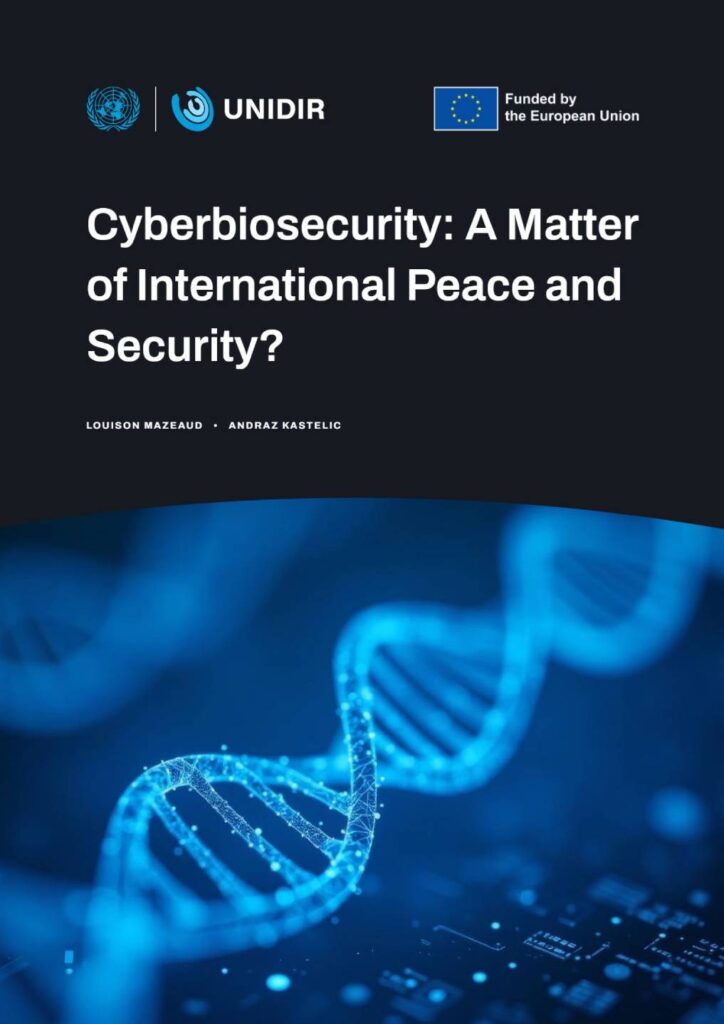The global bioeconomy is growing rapidly notably aided by the convergence of biotechnology with advanced and powerful information and communication technologies (ICT). This nexus between the digital and biological domains brings numerous benefits to a wide range of sectors from agriculture to medicine. Concomitantly, the number of biological research and development facilities are also growing worldwide.
This convergence introduces new and potentially significant risks. They include possible attacks on biological research and development facilities, targeting the confidentiality, integrity and accessibility of information. In the context of international peace and security, ICT incidents present a spectrum of consequences, from minor to significant. For example, a minor event could involve a malicious actor spoofing an agricultural facility’s sensors to transmit false data to owner, impacting the annual production of crops. Conversely, a significant event could involve a malicious actor infiltrating the ICT systems of a biological research and development facility, to interfere with an automated production system, remotely altering the compounds, thus rendering its product ineffective, or worse, harmful.
Various scholars and practitioners have attempted to name and define a concept recognizing the unique characteristics of the infrastructure, data, vectors, and risk implications at this nexus. Cyberbiosecurity refers to a collection of practices aimed at addressing the potential ICT threats to those systems at the intersection of the digital and biological domains. More specifically, it includes methods, procedures and measures to tackle ICT threats to biosafety and biosecurity.
To better understand the nexus between ICT and the biological field, this paper begins with an outline of some of the benefits introduced by the integration of advanced ICT in biological research and development. It then introduces the above definition of the concept of ‘cyberbiosecurity’ and proceeds to outline some of the key risks at this nexus. The New Agenda for Peace launched by the Secretary-General in 2023 highlights the need for Member States to prevent the weaponization of emerging domains and promote responsible innovation (Action 11). The 2024 Summit of the Future was an opportunity for Member States to reaffirm their commitment to the prevention of biorisks and misuse of emerging technologies. This was particularly reflected in the Pact for the Future, specifically in Action 26 (to uphold disarmament obligations and commitments) and Action 27 (to seize opportunities associated with new and emerging technologies and address potential risks posed by their misuse). Cyberbiosecurity appears at the junction of these two goals.
This notion has however received tangential attention in the multilateral discussion on international ICT security, specifically the General Assembly subsidiary bodies the Groups of Governmental Experts from 2004 to 2021 and Open-ended Working Groups since 2019. In the context of the Biological and Toxin Weapons Convention (BWC), limited attention has been given to cyberbiosecurity related issues. There are however cyber-related elements mentioned in documents and statements of the last 10 years.
Finally, in the United Nations Security Council, several States have expressed concern over the increase in cyber operations targeting critical infrastructure, including in the health sector, particularly during the COVID-19 pandemic. While not encompassing all aspects of this issue, these discussions can help in sensitizing the international community and practitioners on the need for better measures.
One way forward could be to clarify the breadth of the concept of cyberbiosecurity through exchanges with relevant communities and considering cyberbiosecurity in the context of the ongoing BWC Working Group, notably in discussions on scientific and technological developments. This approach could allow for an exchange of views and good practices in the cyber domain and their applicability to biological research and development facilities.
Citation: Louison Mazeaud and Andraz Kastelic, “Cyberbiosecurity: A Matter of International Peace and Security?” UNIDIR, Geneva, 2025. https://doi.org/10.37559/WMD/25/CBW/02.
